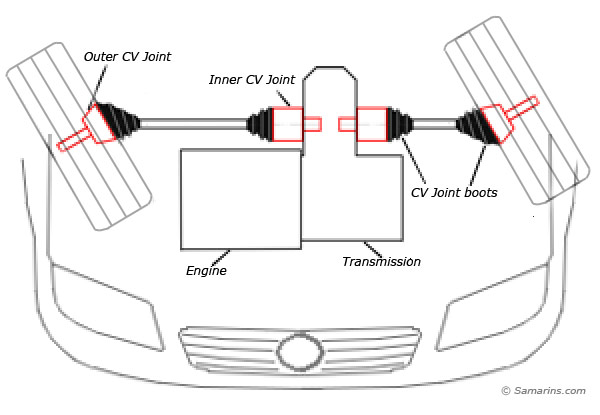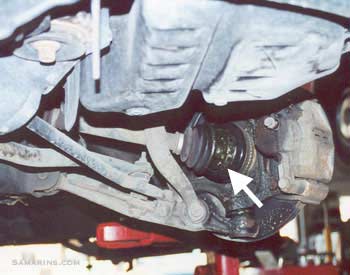 Typical front-wheel drive vehicle set-up | A Constant Velocity Joints or CV joints are attached to each end of a drive shaft (see the picture).
The CV joints are needed to transfer the torque at a constant speed to steered wheels as well as to accommodate up and down motions of the suspension.
You will find CV joints in all front-wheel drive cars. Many rear- and four-wheel drive cars and trucks have CV joints as well. The CV joint is packed with grease and protected by the rubber or plastic boot.
It does not require any maintenance and supposed to last very long provided that protective boot will not get damaged.
There are two most commonly used types of CV joints: ball-type and tripod-type. Different variations of ball-type CV joints are commonly used on the outer side of the drive shaft, while tripod-type CV joints mostly used on the inner side. Most common problem with the CV joints is when the protective boot gets damaged. Once this happens, the grease comes out and the moisture and dirt come in, eventually causing the CV joint to fail due to lack of lubrication and corrosion.
If a damaged boot caught early, simply replacing the CV joint boot and repacking the CV joint with fresh grease may fix the problem. If continue driving with broken boot, the CV joint or a whole drive shaft will need to be replaced. In worst case, the CV joint may disjoin causing the vehicle to stop running.
A clicking or popping noise when turning is the one of the indications of CV joint problems.
If you're looking for detailed repair information on your car, you can buy an online subscription from Alldata DIY and get an instant access to the repair manual for your car. |





















No comments:
Post a Comment